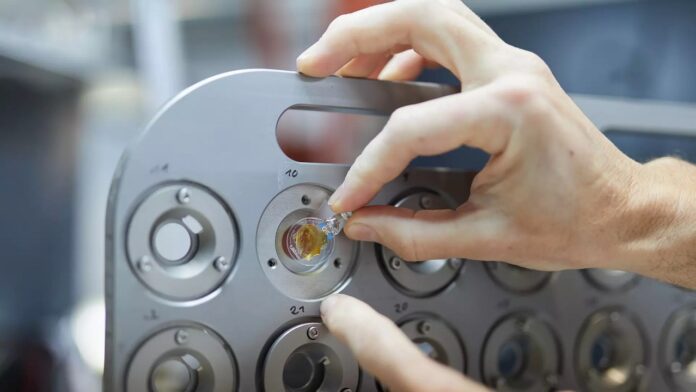Cultural heritage assets play a critical role in the economic growth of the tourist and art industries, generating excellent and inclusive environments that improve residents’ quality of life. The long-term conservation of essential objects and collections must be addressed to maximize such advantages. Science has played a critical role in addressing the preservation of our cultural, historical, and architectural legacy by developing approaches and solutions that facilitate its transfer to future generations.
Organic solvents are frequently used to clean particularly water-sensitive modern/contemporary artifacts. Because most solvents are poisonous, restricting systems must be designed to use these fluids in a safe and regulated manner.
Researchers at the Technical University of Munich’s (TUM) Research Neutron Source Heinz Maier-Leibnitz (FRM II) have created a non-toxic, environmentally friendly, sustainable painting cleaning agent.
Paintings that are artistically valued often become dull due to a patina of dust, soot, aggressive air pollutants, and microorganisms. To remove this patina, restorers usually utilize liquid organic solvents, both toxic to humans and environmentally harmful.
Castor oil, a naturally occurring substance that may be synthesized through specific procedures to create stiff gels, is the primary ingredient of the cleaning agent. The ability of these organogels to include organic solvents in their molecular networks makes them unique.
Baglioni said, “The gels carrying the solvent can be used to clean works of art without further protective measures. The restorer can apply the organogels and then remove the dust and dirt accumulated on the surface after letting them work for a while. The procedure is very low-impact since the solvents remain in the gels and cannot penetrate surface structures.”
The structure of organogels can only be explored through traditional research methods. Neutrons with shorter wavelengths than light can show designs as small as a few nanometers.
He said, “Neutrons are necessary to understand the structure and dynamics of the organogels.”
The researchers used the SANS-1 instrument, a small-angle neutron scattering (SANS) measurement device, to expose the nanostructure of the polymers and provide information on how the structure changes when the polymers are charged with organic solvents.
The investigation results were used to optimize the new cleaning agent, tested at the Peggy Guggenheim Museum in Venice. The components are easy to store, can be mixed as needed, and can be applied to paintings. The new cleaning agent was recently used to successfully restore a painting by Giorgio de Chirico, which had been difficult to clean using conventional methods.
In conclusion, Castor oil-based cleaning procedures are designed to clean artistic surfaces that cannot be washed with water. These systems are extremely successful, complementing the chemical hydrogel networks that are now the most effective, exceptionally when conservators choose organic solvents over aqueous formulations.
CSGI, the Italian Ministry MUR under agreement PRIN-2017249YEF, and the European Union funded the study.
Journal Reference:
- Giovanna Poggi,Harshal D. Santan, et al. Nanostructured bio-based castor oil organogels for the cleaning of artworks. Journal of Colloid and Interface Science. DOI: 10.1016/j.jcis.2023.01.119
